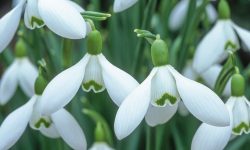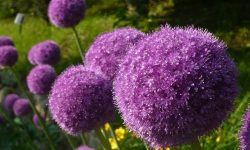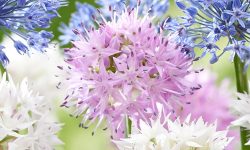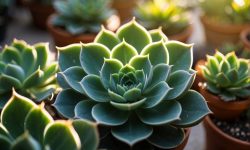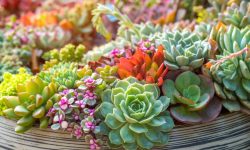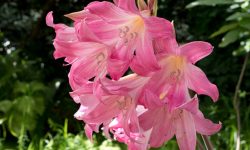Few plants capture the drama and elegance of the tropics quite like the Bird of Paradise. With its bold, banana-like leaves and striking, crane-shaped blooms in vibrant orange and blue, this plant transforms any corner into a lush, exotic retreat. Whether you’re nurturing one indoors or cultivating a garden oasis outside, the Bird of Paradise instantly elevates your space with its architectural beauty and vibrant energy.
But beauty this bold doesn’t have to come with high maintenance. When you understand its year-round care needs—light, water, soil, and temperature—you can help your Bird of Paradise thrive effortlessly in any season. This guide covers everything you need to know to keep your plant happy, healthy, and growing strong—without the stress or guesswork.
Understanding Soil and Potting Needs
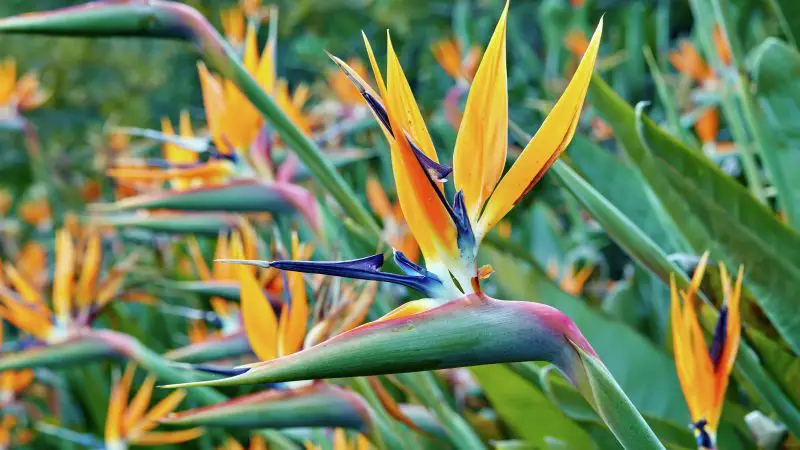
Bird of Paradise plants thrive best in well-aerated, nutrient-rich soil that allows for consistent moisture without becoming waterlogged. The right soil mix is critical to supporting strong root growth, promoting stability, and preventing problems like root rot. A high-quality potting mix that blends organic material with components like perlite, pumice, or coarse sand ensures optimal drainage while still holding enough moisture for the plant’s tropical roots.
If you’re potting a Bird of Paradise indoors, choose a container with good drainage holes and enough depth to accommodate its fast-growing root system. These plants prefer to be slightly root-bound, especially if you’re trying to encourage blooms, so avoid upsizing the pot too frequently. Every two to three years, assess the root ball to see if the plant has outgrown its current pot. Signs include roots circling the base or growing out of the drainage holes.
For outdoor planting in warmer climates, make sure the garden bed soil drains freely and isn’t compacted. If necessary, amend native soil with compost and sand or perlite to achieve a looser, more breathable texture. Raised beds or mounded planting areas can be especially helpful in wet regions to keep roots from staying too damp.
Monitoring the moisture level of the soil is also key. While the Bird of Paradise likes a consistently moist environment, it does not tolerate soggy or saturated roots. Let the top couple of inches dry out between waterings to strike the right balance. Using your finger to test the soil or investing in a moisture meter can help you water more accurately and avoid issues tied to overwatering or poor drainage.
Watering Requirements by Season
Bird of Paradise plants have different watering needs throughout the year, depending on seasonal changes in light, temperature, and humidity. Adjusting your watering routine to match the plant’s natural growth cycle is essential for preventing stress and maintaining healthy roots.
Spring and Summer
During the active growing season, typically from late spring through early fall, Bird of Paradise plants require more frequent watering. Warm temperatures and longer daylight hours stimulate leaf production and root expansion, increasing the plant’s need for moisture. Water deeply once the top two inches of soil feel dry, ensuring the moisture reaches the lower root zone. For potted plants, allow excess water to drain completely to prevent soggy soil. In very hot or dry climates, you may need to water two to three times per week, especially for outdoor specimens exposed to full sun.
Fall
As temperatures begin to cool and daylight hours shorten, the plant’s growth rate slows. Reduce watering frequency during this transition period. Monitor the soil more carefully and only water when the top few inches have dried out. Overwatering in fall, when the plant is less active, can lead to excess moisture retention and root problems.
Winter
In winter, the Bird of Paradise enters a rest phase, particularly in cooler climates or when grown indoors. Watering should be minimal during this time. Once every 10 to 14 days is usually sufficient, depending on your home’s temperature and humidity. Make sure the pot is not sitting in standing water and that drainage remains consistent. Dry indoor air from heating systems can cause leaves to brown at the edges, so consider misting the foliage occasionally or using a humidifier to maintain ideal humidity levels without overwatering.
Tips for All Seasons
No matter the time of year, always check soil moisture before watering. Stick your finger two inches into the soil or use a moisture meter to gauge whether the plant truly needs water. Keep an eye on environmental factors such as indoor heating, outdoor rainfall, or humidity changes, all of which can affect how quickly the soil dries out. Adapting your routine accordingly will help prevent common watering mistakes and support year-round plant health.
Providing the Right Light for Maximum Growth
Light is one of the most critical factors in determining how well your Bird of Paradise plant grows and whether it produces flowers. Native to the sunny regions of South Africa, this plant thrives in bright, direct light and will reward you with vigorous foliage and, under the right conditions, stunning blooms.
Indoors, place your Bird of Paradise near a south- or west-facing window where it can receive at least 5 to 6 hours of direct sunlight each day. If natural light is limited, especially during winter months, consider supplementing with a full-spectrum grow light to maintain healthy growth. Without enough light, the plant may develop leggy stems, slow growth, and dull, drooping leaves.
For outdoor plants, choose a spot that gets full sun to partial shade. In hot southern climates, providing some afternoon shade can help prevent scorching, particularly on younger leaves. In cooler zones where Bird of Paradise is grown in containers, move the plant outdoors in spring and summer to benefit from natural light, then bring it back indoors when temperatures drop.
Remember, the more light your plant receives, the more energy it can devote to developing strong roots, large leaves, and eventually, flowers. However, always introduce your plant to brighter conditions gradually to avoid sunburn. Finding the right balance ensures consistent, lush growth throughout the year.
Managing Temperature and Humidity
Bird of Paradise plants prefer warm, stable conditions that mimic their tropical origins. To encourage steady growth and prevent stress, it’s essential to maintain both temperature and humidity within ideal ranges throughout the year.
The ideal temperature for Bird of Paradise is between 65°F and 80°F (18°C to 27°C). They can tolerate slightly cooler nights but may suffer if exposed to prolonged temperatures below 50°F (10°C). If you’re growing the plant outdoors in containers, bring it indoors before nighttime temperatures drop in the fall. Sudden temperature fluctuations or cold drafts—especially near windows or air vents—can cause leaf curling or brown edges.
Humidity is equally important. Bird of Paradise enjoys moderate to high humidity, ideally around 50% or higher. In dry indoor environments, especially during winter when heaters are running, low humidity can cause leaves to lose their gloss or become crispy at the tips. To maintain proper humidity levels, you can mist the plant regularly, place it near a humidifier, or set the pot on a pebble tray filled with water (without letting the pot sit directly in water).
Maintaining the right temperature and humidity doesn’t just keep your plant looking good—it also supports healthy metabolic function and nutrient uptake, laying the foundation for lush foliage and long-term vitality.
Fertilizing for Vibrant Blooms and Strong Leaves
Bird of Paradise plants are considered moderate to heavy feeders, especially during their peak growing season. To maintain healthy foliage and encourage future flowering, consistent and appropriate fertilization is essential.
From early spring to early autumn, apply a balanced liquid fertilizer every 2 to 4 weeks, ideally after watering to prevent root burn. A general-purpose blend like 10-10-10 or 20-20-20 works well for promoting lush green growth and supporting the development of flower structures. If your main goal is to stimulate blooming in mature plants, switching to a bloom-boosting formula higher in phosphorus (e.g., 10-30-20) once a month can help enhance flower production.
In the fall and winter months, when the plant naturally slows down, reduce fertilization to once every 6 to 8 weeks—or stop altogether—depending on the plant’s growth activity. Continuing to fertilize heavily during this rest period may lead to fertilizer salt buildup in the soil, which can damage roots and cause leaf tip browning.
For potted Bird of Paradise, it’s important to flush the soil with clean water every few months to prevent nutrient imbalances or toxic buildup. Slow-release granules can also be a good option if you prefer a lower-maintenance approach, though they offer less flexibility in adjusting nutrients throughout the seasons.
When fed correctly, Bird of Paradise will respond with broad, glossy leaves, upright stems, and—under the right light and maturity conditions—spectacular orange and blue flowers that resemble tropical birds in flight.
Pruning and Grooming Your Plant
Regular pruning and grooming not only keep your Bird of Paradise looking neat but also promote healthier growth and reduce the risk of disease. While this plant doesn’t require frequent heavy pruning, occasional maintenance makes a big difference in its appearance and vitality.
Begin by removing any yellowing, damaged, or dead leaves at the base of the plant using clean, sharp pruning shears. This helps redirect energy toward new growth and prevents pests or fungal issues that can thrive in decaying foliage. Be sure to cut close to the soil line, but avoid injuring the healthy tissue around it.
For large, mature plants, you can also thin out crowded stems to improve air circulation and light penetration—both essential for preventing mold or rot in humid environments. Prune spent flower stalks once the blooms fade, cutting them down to the base to keep the plant tidy and encourage the next flush of growth.
Grooming also includes wiping down the leaves regularly with a damp cloth to remove dust. This not only enhances the plant’s glossy look but also improves photosynthesis. Avoid using leaf shine products, as they can clog pores and reduce respiration.
Pruning is best done in spring or early summer when the plant is actively growing, which allows it to recover more quickly. With a little regular care, your Bird of Paradise will stay vibrant, strong, and beautifully shaped throughout the year.
Repotting and Dividing for Healthier Growth
Pests and Common Problems to Watch For
Bird of Paradise is generally hardy, but it can still face issues, especially indoors or in high-humidity environments. The most common pests include spider mites, mealybugs, aphids, and scale insects. These sap-sucking pests can cause yellowing leaves, leaf curling, or sticky residue. Check the undersides of leaves and stem joints regularly, especially if the plant is stressed or dusty. Treat infestations early with insecticidal soap, neem oil, or by wiping affected areas with a damp cloth.
Overwatering is another frequent problem, often leading to root rot—a serious issue that can quickly harm the plant. Make sure your potting mix drains well, and allow the top few inches of soil to dry before watering again. Signs of root rot include soggy soil, wilting despite moisture, and a foul smell from the pot.
Leaf browning or splitting can occur in low humidity or due to harsh, direct light. While some natural leaf splitting is expected, especially in older leaves, excessive tearing may indicate environmental stress. Keep humidity levels moderate and avoid placing the plant in areas with strong drafts.
By monitoring your Bird of Paradise for early signs of pests and environmental stress, and responding quickly, you can maintain a thriving plant with healthy, vibrant foliage year-round.
Seasonal Adjustments for Year-Round Care
Caring for your Bird of Paradise requires a few thoughtful changes with each season to keep it healthy and thriving. During spring and summer, the plant enters its most active growth phase. This is the ideal time for repotting, fertilizing every two to four weeks, pruning old or damaged leaves, and increasing watering frequency as temperatures rise. Place the plant where it can receive bright, indirect light, and ensure good air circulation to support robust leaf and stem development.
As autumn approaches, reduce watering slightly as the plant’s growth slows. You can also begin tapering off fertilizer applications to allow the plant to enter a more restful phase naturally. If grown outdoors, this is the time to prepare for bringing the plant inside before temperatures drop below 50°F (10°C), as Bird of Paradise is sensitive to cold.
In winter, focus on maintaining stable indoor conditions. Move your plant to the sunniest spot available, away from cold drafts or heating vents. Water sparingly, only when the top inch or two of soil is dry. No fertilizing is needed in winter, as the plant is semi-dormant. If light levels are low, consider using a grow light to prevent legginess and support leaf color retention.
By making these subtle yet important seasonal adjustments, you’ll help your Bird of Paradise stay healthy throughout the year, encouraging stronger growth and better chances of flowering when conditions are right.
Frequently Asked Questions About Caring for Bird of Paradise
How often should I water my Bird of Paradise?
Watering frequency depends on the season and environment. During spring and summer, water when the top inch of soil feels dry, usually once a week for indoor plants and slightly more often for outdoor ones in hot climates. In fall and winter, reduce watering to every 10–14 days or when the soil is dry about two inches deep. Always ensure proper drainage and avoid letting the plant sit in standing water, which can lead to root rot.
Why is my Bird of Paradise not blooming?
Lack of blooms is often caused by insufficient light, being root-bound, or a lack of nutrients. Bird of paradise plants require several hours of bright, direct sunlight daily to initiate flowering. If grown indoors, place it near a south or west-facing window or use grow lights. The plant also needs to be slightly pot-bound to bloom, so don’t rush to repot it unless absolutely necessary. Feeding with a phosphorus-rich fertilizer during the growing season can also help encourage blooms.
Can Bird of Paradise survive outdoors in cold climates?
Bird of Paradise is a tropical plant that cannot survive prolonged temperatures below 50°F (10°C). In USDA zones 10–12, it can be grown outdoors year-round. In cooler climates, it’s best to grow the plant in containers and bring it indoors during late fall or when nighttime temperatures consistently fall below 55°F. Protecting it from frost is crucial, as cold damage can affect both foliage and roots.
What kind of soil is best for Bird of Paradise?
Well-draining soil with good moisture retention is ideal. A mix of potting soil, perlite or pumice, and peat or composted bark provides the best environment for root health. The soil should be airy and loose, allowing oxygen to reach the roots while also holding enough water to prevent dehydration. Avoid heavy or compacted soil that can suffocate the roots or retain too much moisture.
How do I encourage a fuller, bushier Bird of Paradise plant?
To promote fuller growth, provide the plant with plenty of bright light and keep it in a warm, humid environment. Prune dead or damaged leaves regularly to encourage new shoots. Fertilize every four to six weeks during the growing season to support strong foliage development. You can also gently rotate the pot occasionally so all sides receive even light exposure, which helps maintain a symmetrical shape.
Conclusion: Keeping Bird of Paradise Thriving with Ease
Caring for bird of paradise may seem complex at first, but with the right understanding of its needs across the seasons, it becomes a low-maintenance and highly rewarding plant. Focus on light, moisture, and seasonal changes, and you’ll be rewarded with bold foliage and exotic blooms year after year. Whether grown as a houseplant or in the garden, this stunning tropical plant brings long-lasting beauty with just a bit of mindful care.

